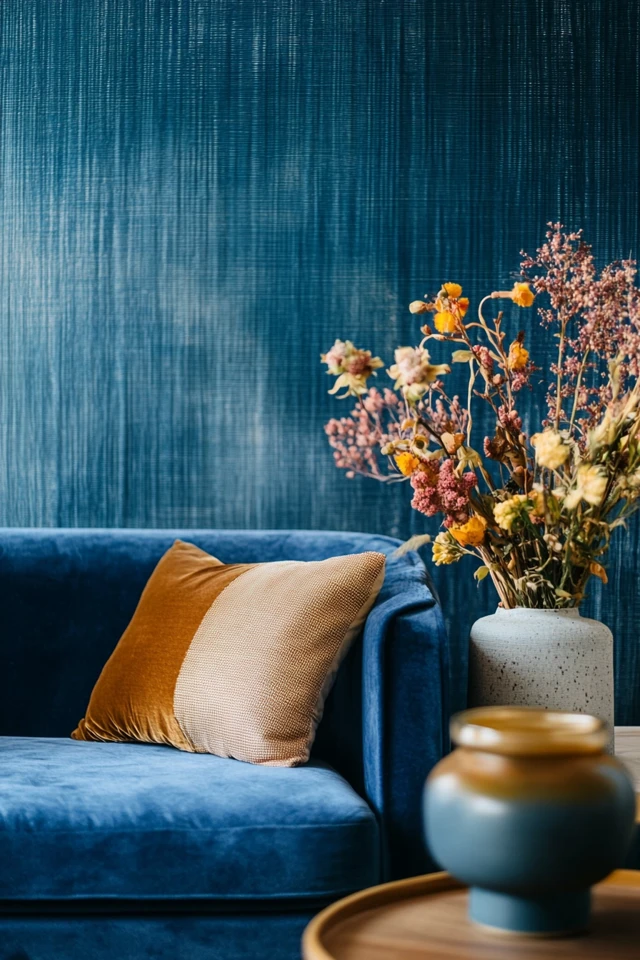Introduction
A beautifully designed space doesn’t just rely on colors or furniture—it thrives on layers of texture that make a room feel alive and engaging. Think about the cozy embrace of a chunky knit blanket paired with the sleek coolness of a marble coffee table, or a woven jute rug anchoring a smooth leather sofa. Mixing and matching textures creates depth and visual interest, transforming even the simplest spaces into rich, multidimensional environments.
My journey into the world of textures began with a design mishap. I had just redecorated my bedroom, choosing pieces that were all gorgeous but too similar—crisp white linens, a glossy lacquered nightstand, and polished wood flooring. While the room looked clean, it lacked soul. One day, on a whim, I draped a soft faux fur throw across the bed, added a woven basket to store books, and swapped out a flat rug for a plush one. Instantly, the space felt cozier and more inviting. That experience taught me the power of combining different textures to create a design that feels complete.
The best part? You don’t need to splurge on expensive decor to make this work. Textures can be introduced through everyday items—think natural fibers, reflective metals, and even painted walls with subtle patterns. In this guide, I’ll show you how to seamlessly mix and match textures to elevate your space.
The Perfect Design for You
This approach is ideal for anyone looking to break free from monotony and add personality to their space. Whether you prefer a minimalist aesthetic or love the drama of maximalist design, texture can be your secret weapon. It works beautifully in spaces that feel too flat or one-dimensional, breathing life into them without overwhelming the overall look.
Imagine a living room where soft linen curtains frame large windows, a smooth velvet sofa takes center stage, and rustic wooden shelves display ceramics with a matte finish. The contrast between these textures creates a dynamic, balanced space that invites touch and exploration. When you mix and match textures, your room becomes not only visually stunning but also more engaging to experience.
Picture Gallery
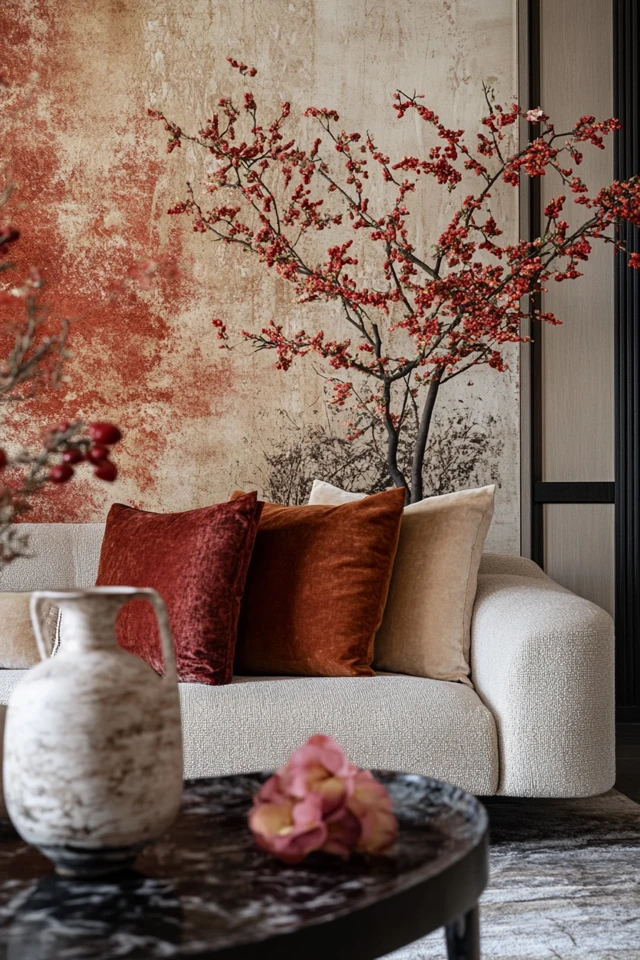
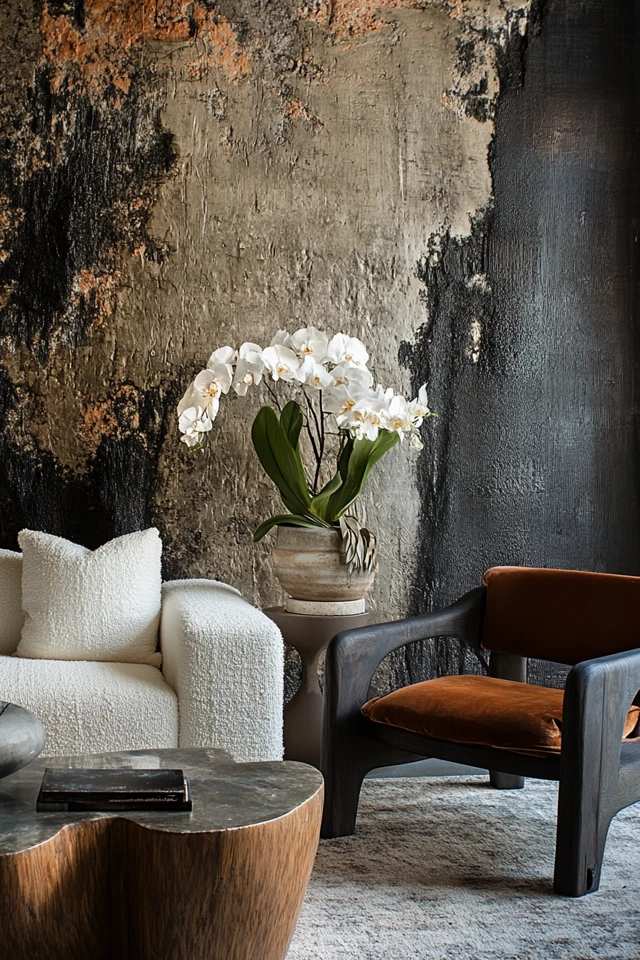

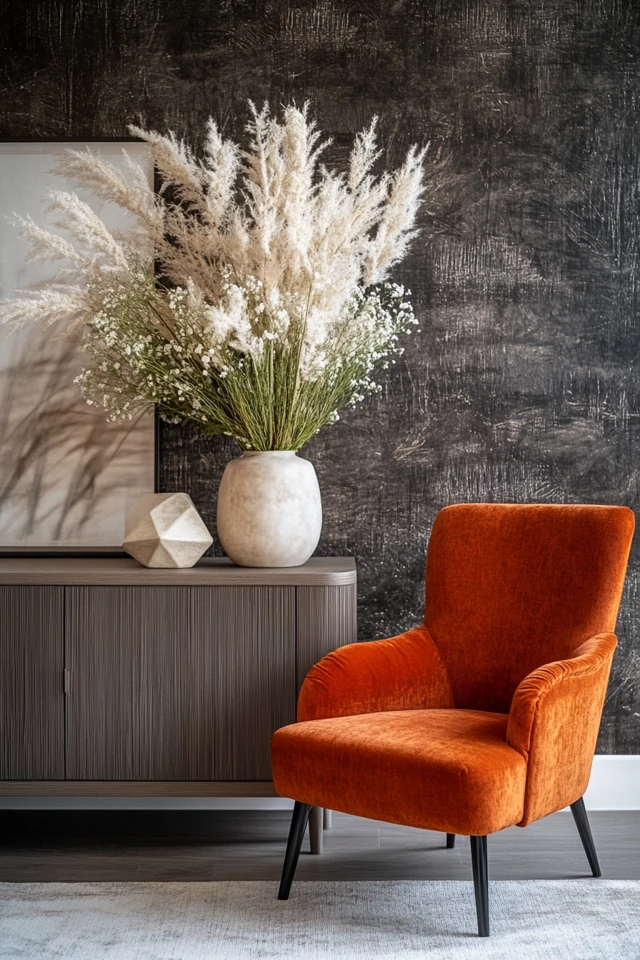

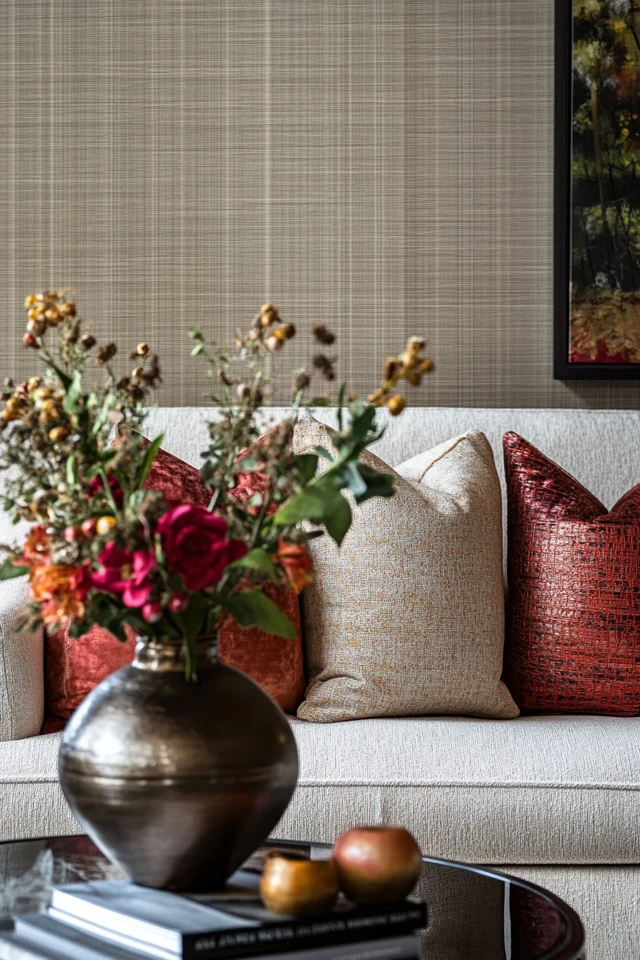


Why These Key Elements Work So Well Together
The key to mixing and matching textures lies in finding balance. Contrasting textures highlight each other’s unique qualities. For instance, pairing a rough jute rug with a polished glass coffee table creates a harmonious juxtaposition—the organic warmth of the rug offsets the cool sleekness of the glass.
Texture also plays a significant role in how a room feels emotionally. Research in evidence-based design reveals that tactile elements can evoke specific moods. For example:
- Soft, plush materials like velvet and faux fur promote comfort and relaxation.
- Hard, smooth surfaces like metals and glass bring an air of modernity and precision.
- Natural textures like wood, rattan, or stone evoke warmth and grounding, connecting us to nature.
When combined thoughtfully, these elements create spaces that are not only stylish but also emotionally resonant. To avoid a chaotic look, stick to a cohesive color palette. This allows the varying textures to shine without competing for attention.
How to Achieve Mixing and Matching Textures: Step-by-Step
- Start with a Neutral Base
- Use solid-colored walls, furniture, or flooring as a foundation. Neutral tones like white, gray, or beige allow textures to stand out.
- Incorporate 3–5 Textures
- Choose a mix of smooth, rough, soft, and shiny materials. For example:
- Smooth: Glass, polished metals, lacquered surfaces.
- Rough: Woven rugs, distressed wood, concrete.
- Soft: Cushions, throws, or velvet furniture.
- Choose a mix of smooth, rough, soft, and shiny materials. For example:
- Layer Up
- Use a base layer (e.g., a large jute rug) and build on it with a smaller textured rug or a plush ottoman for contrast.
- Vary Scale and Patterns
- Introduce texture through both large items (a leather sofa) and small details (knit pillow covers or fringe trim).
- Add Natural and Organic Elements
- Incorporate textures like rattan baskets, clay vases, or live plants to balance man-made materials with organic warmth.
- Don’t Overdo It
- Too many textures can overwhelm the eye. Aim for balance by using a few bold textures and letting subtler ones complement them.
FAQ
1. Why is texture important in interior design?
Texture adds depth, dimension, and personality to a space. It helps prevent rooms from feeling flat or sterile by creating visual and tactile interest.
2. Can I mix textures in a small room?
Absolutely! In small spaces, stick to fewer textures to avoid visual clutter. Combine soft fabrics with one or two standout materials like wood or metal for balance.
3. What’s the best way to add texture to walls?
Consider textured wallpaper, wood paneling, or even a painted accent wall with subtle patterns. Fabric wall hangings or woven art pieces are also great options.
4. How do I mix textures without clashing styles?
Stick to a cohesive color palette or design theme (e.g., modern, rustic, or bohemian). This creates harmony even when the textures are varied.
5. Is there such a thing as too much texture?
Yes! Too many bold or competing textures can feel chaotic. Keep a balance by choosing one or two dominant textures and letting the rest be complementary.
Variations
- Minimalist Twist: Stick to monochrome colors and focus on subtle contrasts, like smooth concrete paired with soft linen.
- Maximalist Vibe: Layer bold textures, such as tufted furniture, patterned rugs, and metallic accents, for a dramatic look.
- Budget-Friendly Option: Thrift textured items like woven baskets, use DIY techniques to create textured wall art, or add affordable plush throws.
- Eco-Friendly Version: Opt for natural materials like cork, bamboo, and organic cotton to mix textures sustainably.
How to Showcase It
- Seasonal Changes: Swap lighter fabrics for cozy ones in fall and winter, like chunky knit throws or faux fur cushions. For spring and summer, bring in airy textures like cotton and linen.
- Holiday Gatherings: Combine festive textures like glittery table runners with rustic wooden candleholders for an inviting holiday table.
- Everyday Serenity: Create a relaxing vibe by layering soft textures, like cashmere blankets and velvety cushions, in your favorite reading nook.
- Post-Renovation Reveal: Use contrasting textures to highlight new features, like pairing smooth marble countertops with a rough-cut wooden barstool.
Occasions to Feature It
- Cozy Nights In: Mix a plush throw blanket with a shag rug for the ultimate movie night setup.
- Dinner Parties: Set a textured tablescape with linen napkins, ceramic dishes, and woven placemats for a stylish presentation.
- Housewarming Celebrations: Showcase your new space by combining textures that reflect your personality, like sleek glass vases filled with dried flowers.
Conclusion
Mixing and matching textures is one of the easiest and most impactful ways to elevate your space. It brings depth, warmth, and a sense of artistry to any room, creating an environment that’s as tactile as it is visually stunning. Whether you’re decorating a cozy apartment or a sprawling home, textures can help you achieve a design that feels rich and layered without overwhelming your budget or style.
Experiment with different materials, get creative, and let texture tell your story. Once you start mixing textures, you’ll never go back to one-dimensional design. So, go ahead—add that chunky knit blanket, textured vase, or woven basket, and watch your space come to life.

